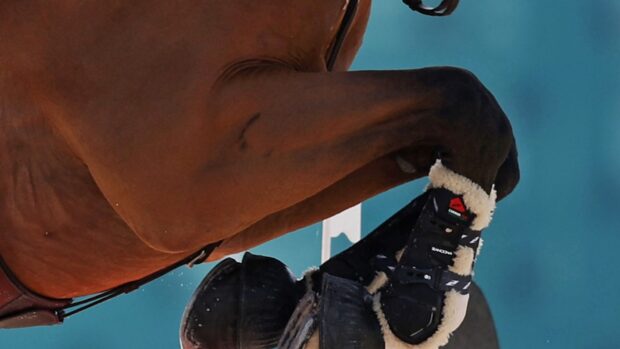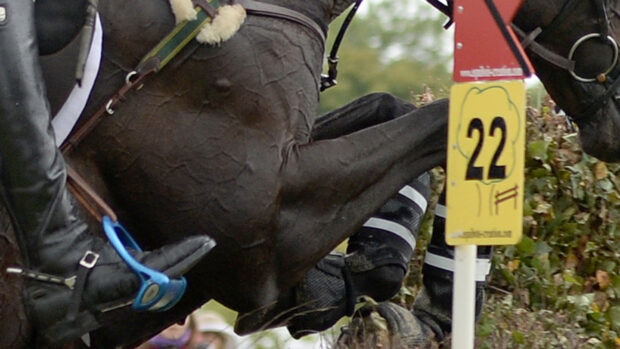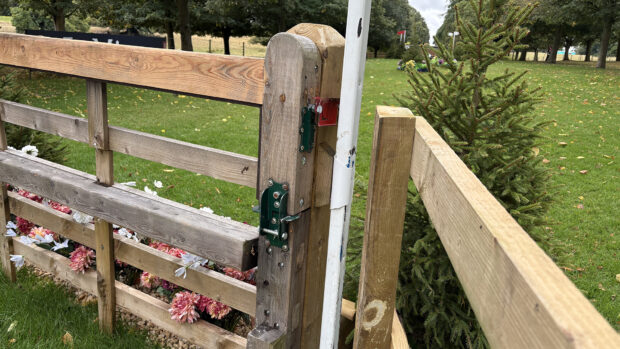Olympic gold medallist David O’Connor has urged other disciplines to start tracking falls as recent figures show around a quarter of eventing falls do not happen at cross-country fences.
Mr O’Connor, the FEI eventing committee chairman, made the call during his address to the FEI general assembly (21 November).
He highlighted the reduction in cross-country jumping falls in recent years, which H&H covered as part of discussions at the eventing risk management seminar in January (news, 16 February).
“There’s been a 16% reduction in horse falls just in the last six years, which is a pretty significant number, and a 70% reduction in any type of rotational fall in the last 10 years,” said Mr O’Connor, adding that this nods to the positive impact measures, including frangible devices, education, course-design, and minimum eligibility requirements, are having.
But he noted one “standout” figure is that 25% of total falls, which includes horse and/or rider falls, do not happen at cross-country fences. These include falls on the flat, in the other phases and warm-ups.
“That’s a fairly stunning number,” said Mr O’Connor, suggesting other disciplines start tracking their fall data to start to understand more about this.
“I know the United States has actually started the process of looking across all disciplines at what is happening, and not just leaving it up to one.”
The FEI has been collecting eventing fall data for many years, but until 2018 any fall not at a cross-country fence was recorded as “non-fence related” – regardless of how and where it happened. Since 2018, these have been separated into more detailed categories, to help the sport better understand any trends.
For example, of the 1,165 falls in 2022, 842 were at cross-country fences, 87 non-fence related on the cross-country, 146 took place in the showjumping, and 90 during warm-ups.
Mr O’Connor added that he encourages other disciplines to record data is because numbers can be quite surprising, and only from knowing these can the sport then start to ask questions about reasons for falls.
FEI medical committee chairman Mark Hart told the assembly of several major ongoing initiatives around rider safety. These are headlined by a project to evaluate the performance of equestrian helmets, with the recommendation for additional testing standards.
An equestrian helmet working group was put together this year, comprising stakeholders and experts such as engineers, academics, manufacturers, medical personnel, an Olympic rider, racing experts and the eventing risk management group.
Dr Hart gave a short summary of some of the group’s main findings; the conclusions are set to be released at the end of the year.
“Our goal is to decrease not only falls, but in parallel, we need to make efforts to further reduce serious head injuries in the inevitable event of falls in our sport,” said Dr Hart.
“[The working group] evaluated the performance needs for protective headgear and assessed the existing standards against those needs, to better determine if current standards could be improved to provide better protection for our riders to reduce serious head injuries.
“After extensive review of the available data, the working group is recommending additional testing standards and reduced head injury transmission limits for improved safety.
“It is expected that these recommendations will evolve as scientific criteria are refined and continuing research is taken out.
“We also hope that this will nudge the certification organisations to quicker update their standards, and hopefully eventually have harmonisation of the certification projects around the world and have a universal common standard.”
In a separate project, the FEI medical committee is coordinating the creation of an expert task force on air vest safety and effectiveness. The aim of the air vests working group will be to conduct a complete literature review of available data on equestrian injury patterns for chest, spine and thoracic injuries to determine what role the devices could have in reducing injuries.
They will also evaluate recommendations of other sports, such as motocross, and develop specific research projects, with the eventual aim of translating these findings into new testing standard recommendations for manufacturers and certification organisations.
Other key projects in the pipeline for 2024 include exploring a new system for reporting rider injuries, to create an “overall equestrian database for injuries”, plus guidance for organising committees on how to set up a mental health emergency plan for their events.
You might also be interested in:

‘A good life for horses’: why equestrian sport’s future rests on all our shoulders, and what are the next steps

Rotational falls in eventing at all-time low – but more work ‘still to do’

Subscribe to Horse & Hound magazine today – and enjoy unlimited website access all year round
Horse & Hound magazine, out every Thursday, is packed with all the latest news and reports, as well as interviews, specials, nostalgia, vet and training advice. Find how you can enjoy the magazine delivered to your door every week, plus options to upgrade your subscription to access our online service that brings you breaking news and reports as well as other benefits.




